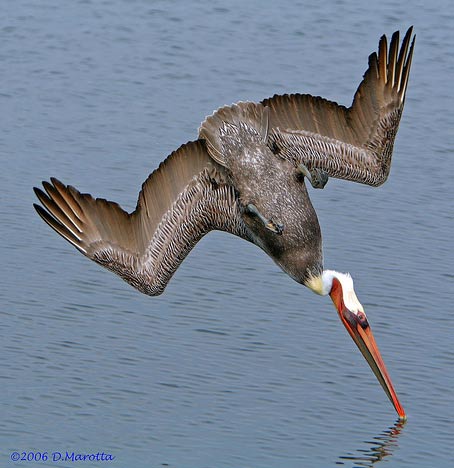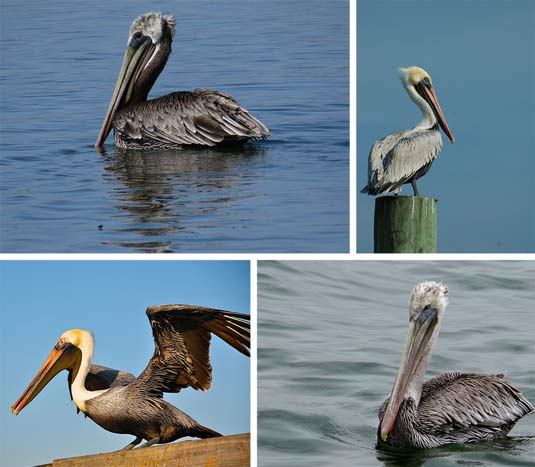Brown Pelican

Currently on the Endangered Species List, the brown pelican is found along the Pacific, Atlantic, and Gulf Coast of the US and Mexico, extending as far south as Venezuela on the Atlantic Coast, and to Chile on the Pacific Coast. Following the nesting season, the brown pelican can also be found northward – in Nova Scotia and British Columbia. The brown pelican’s habitat is typically waterfronts, marina, sandy beaches and lagoons in coastal areas.
One Big-Mouthed Bird!
The average length of the brown pelican is 4 ft (1.2 m), and it is easily recognized by its brown and gray body, white head, and light brown crown. The neck of the brown pelican turns dark brown during the mating season. One of the oddest features of the brown pelican is its long gray bill and attached pouch of skin which can hold as much as three times the contents of its stomach – or around three gallons of water and fish! The brown pelican has a unique way of catching its prey; considered a “plunge” diver, the brown pelican drops from midair with its wings partly folded and dives into the water to grab unsuspecting fish that the pelican may have seen from as far up as 50 ft (15 m) using its keen eyesight. No other species of pelican does this. In the water, its bill and pouch work like a net to scoop up its meal; water strains from the side of its bill as its tips its head back and swallows its catch. The pouch is not used to carry the fish, only as a scoop. In the wild, sea gulls have been observed perching atop the brown pelican’s head, waiting for an opportune moment to steal a fish from the bounty in the pelican’s pouch.

Nesting Habits
The male of the species decides upon a nesting site before attempting to woo females with a humorous display of head movements. Once a female has chosen a male, the male will bring her “gifts” of sticks, grass and reeds with which to build her nest. Nest building can take more than a week and nests are commonly built on the ground, although some crafty brown pelicans may choose a tree or bush as a nesting site. The female will lay as many as three eggs a few days after the completion of the nest, and both the male and female will take turns incubating the eggs in a most unusual manner: using their webbed feet, they cover the eggs to keep them warm. Hatching takes around a month.
